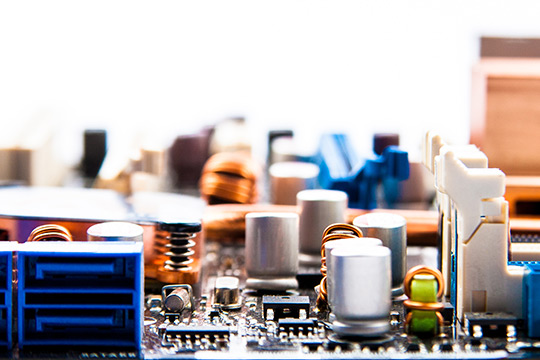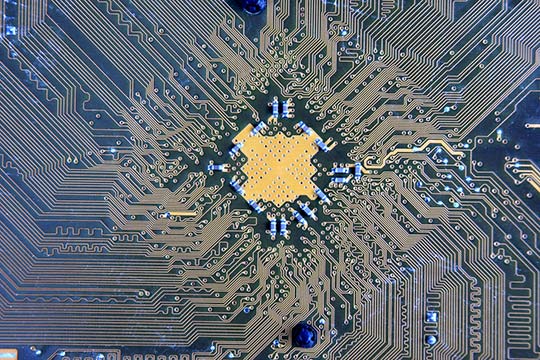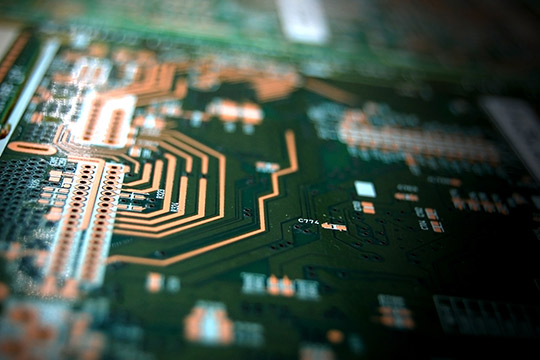TECHNOLOGY FOCUS
Low loss and highly selective filters and multiplexers are key components in wireless networks, military systems and communications satellites. A low loss diplexer allows a transmitter and receiver to simultaneously share the same antenna. The same filter must also guarantee that co-located transmitters do not interfere with each other. Many of these filters and multiplexers are based on cavity combline technology, which is relatively simple to manufacture. Others are based on dielectric resonator (DR) technology that can realize a high quality factor (Q) filter in a smaller volume.
Introducing non-adjacent couplings (cross-couplings) into a microwave filter can generate transmission zeros in the lower and or upper stopbands. It is the filter order and the clever placement of these transmission zeros that generates the selectivity needed for many applications. The theory of cross-coupled filters was first introduced in the 1960’s. It was then adopted for satellite multiplexer applications in the 1970’s and for other applications in the following decades.
EM simulation is also an essential component of modern cavity filter design. We now have the ability to model and optimize complete filter structures in the EM domain. These virtual prototypes have greatly reduced the number of hardware prototypes that must be built and tuned. Occasionally, we find unexpected spurious couplings in our virtual EM prototypes that prevent us from tuning the filter to the desired response. These spurious couplings would be very difficult and expensive to diagnose after the hardware is built.


COURSE CONTENT
This course is focused on practical filter design methods for high Q cavity combline filters. The core material is a universal procedure for narrow band filter design that can be applied to virtually any filter technology or topology. The procedure is rooted in Dishal’s method with powerful extensions that include the port tuning concept, equal ripple optimization techniques, and efficient EM simulation. All the techniques presented can be implemented using commercially available CAD tools.
Practical procedures for extracting unloaded Q, external Q, and coupling coefficients are quite important in the design process and in evaluating prototypes. These techniques will include extracting data from hardware and from EM simulations. Some tutorial material on field-solvers will also be presented. The EM simulation examples relate specifically to cavity filter design and include tips and techniques for more accurate and efficient simulation.
Example filter designs will be presented with measured data and error analysis. The instructor will choose examples to develop based on the interests of the class.
WHO SHOULD ATTEND
The course material is suitable for filter designers, designers of other components, systems engineers, and technical managers.

Day One
Introduction to Filter Design, Optimization, and Port Tuning
We will present the briefest possible introduction to basic filter design concepts.
Starting with lowpass prototypes, we will touch on Chebyshev and elliptic prototypes and finding prototype element values. Next we will turn to a brief overview of the most common filter design techniques.
Topics will include synthesis from an insertion or return loss function, the coupling matrix approach, and synthesis by optimization. The use of general purpose linear simulators for equal-ripple optimization will also be discussed.
Finally, we will introduce the port tuning concept.
- Basic Filter Concepts
- Chebyshev and Elliptic Prototypes
- Synthesis From Insertion Loss Functions
- Coupling Matrix Approach
- Synthesis by Optimization
- Equal-ripple Optimization
- The Port Tuning Concept
Day Two
Narrow Band Filter Design and EM Simulation
Our approach to narrow band filter design starts with Dishal’s method and moves a step beyond with port tuning of a full EM model. The port tuned model is a virtual prototype that can be diagnosed and optimized before any hardware is built.
Modern TEM filters often employ cascade triplets and quads to realize transmission zeros in the stopband or flatten group delay in the passband. These filters can also be designed using our approach.
At some point, practical procedures are needed to measure unloaded Q, external Q, and coupling coefficients. Systematic methods for tuning filters are also needed.
All of these methods and procedures can be applied to actual hardware or to an EM simulation of the hardware.
- Narrow Band Filter Design
- Cascade Triplets and Quads
- EM Filter Prototypes
- Unloaded Q
- External Q
- Coupling Coefficients
- Filter Tuning
Day Three
Designing Combline Filters, DR Filters, and Multiplexers
When high unloaded Q is required, designers often turn to cavity combline or dielectric resonator filters. Combline and DR filters are now used in high volumes in wireless base stations and in lower volumes in military systems or communications satellites.
Meeting customer requirements often requires additional transmission zeros in the stopbands, which are realized using various types of cross-couplings.
Some applications also call for these high performance filters to be diplexed or multiplexed. Again, strategies for efficient design and EM simulation will be discussed for all the topologies presented.
- Cavity Combline Filters
- Dielectric Resonator Filters
- Diplexers and Multiplexers
- Strategies for Design and EM Simulation

